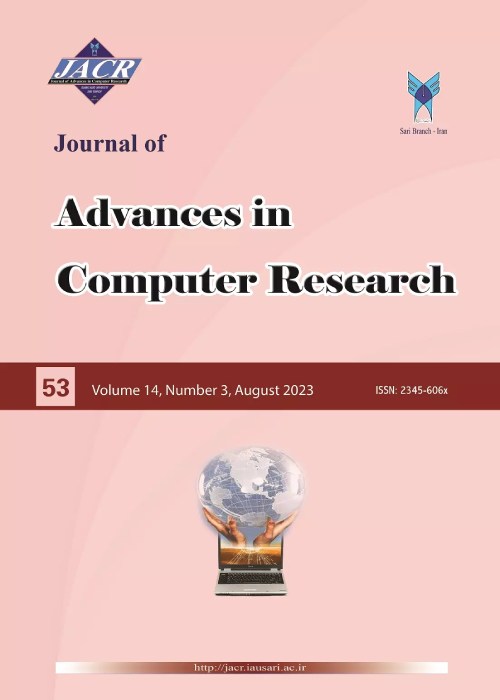فهرست مطالب

Journal of Advances in Computer Research
Volume:14 Issue: 3, Winter 2023
- تاریخ انتشار: 1402/07/03
- تعداد عناوین: 2
-
Pages 1-19
Due to improvement of Internet, employing web services is developed. By utilizing web services, distributed applications can exchange information. Trust is a main criterion to choose the proper web service as web services selection is a main issue which is still absorbing researchers to conduct research works on this field and analyze it. Due to the significant of this problem, neuro-fuzzy system is used to optimize the trust of single web services. Eight factors such as QoS, user preferences, subjective perspectives, objective perspectives, credibility of raters, bootstrapping, dynamic computing of trust and independency are considered in the considered neuro-fuzzy system. To achieve a trust optimization, 8 membership function various neuro-fuzzy systems are considered in this paper. Ultimately, the obtained results illustrates that the root mean square error, the precision amount, the recall amount and the F score amount of the neuro-fuzzy system is: 0.0873 %, 0.986, 0.988 and 0.987
Keywords: web service, optimization trust, neuro-fuzzy system -
Pages 20-29
By notice to extension software technology and modern applications, software reliability and availability is very serious problem. Software fault tolerance techniques improve these capabilities. One of the techniques is Software rejuvenation, which counteracts software aging. Software aging may lead to performance degradation or crash/hang failure or both. Increasing use of software, rapid and unavoidable changes in the operational environment bring many problems for software engineers. One of these problems is the aging and degradation of software performance. Software rejuvenation is a proactive and preventive approach to counteract software aging. By performing calculations and solving equations, we easily calculate the availability of the system for each of the models. In this paper, we address this technique for the application with one, two and three software versions, then extend model for n versions. The numerical experiment results show that with more software versions can greatly reduce expected downtime and improve availability of application.
Keywords: Software rejuvenation, Availability, reliability

